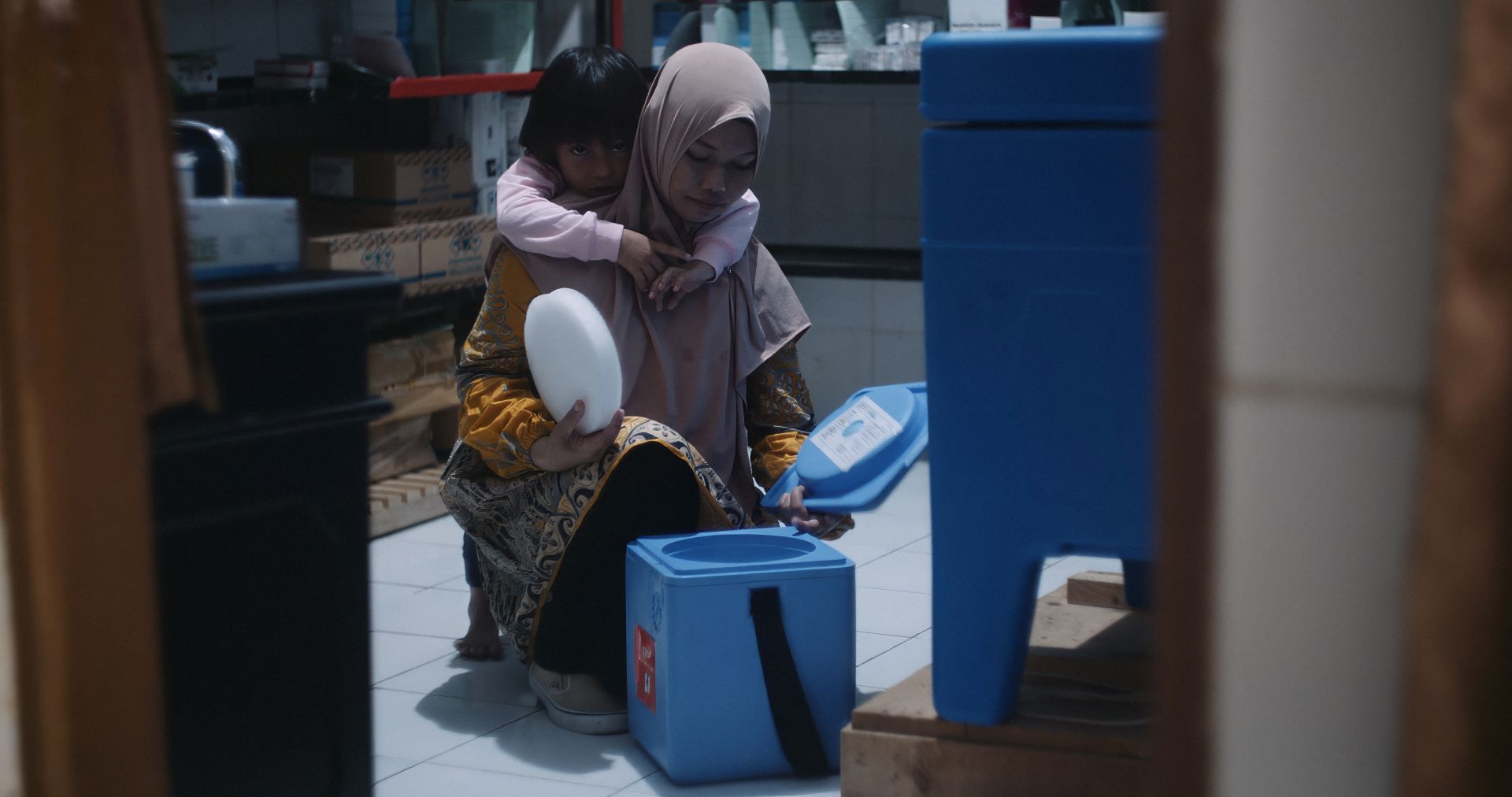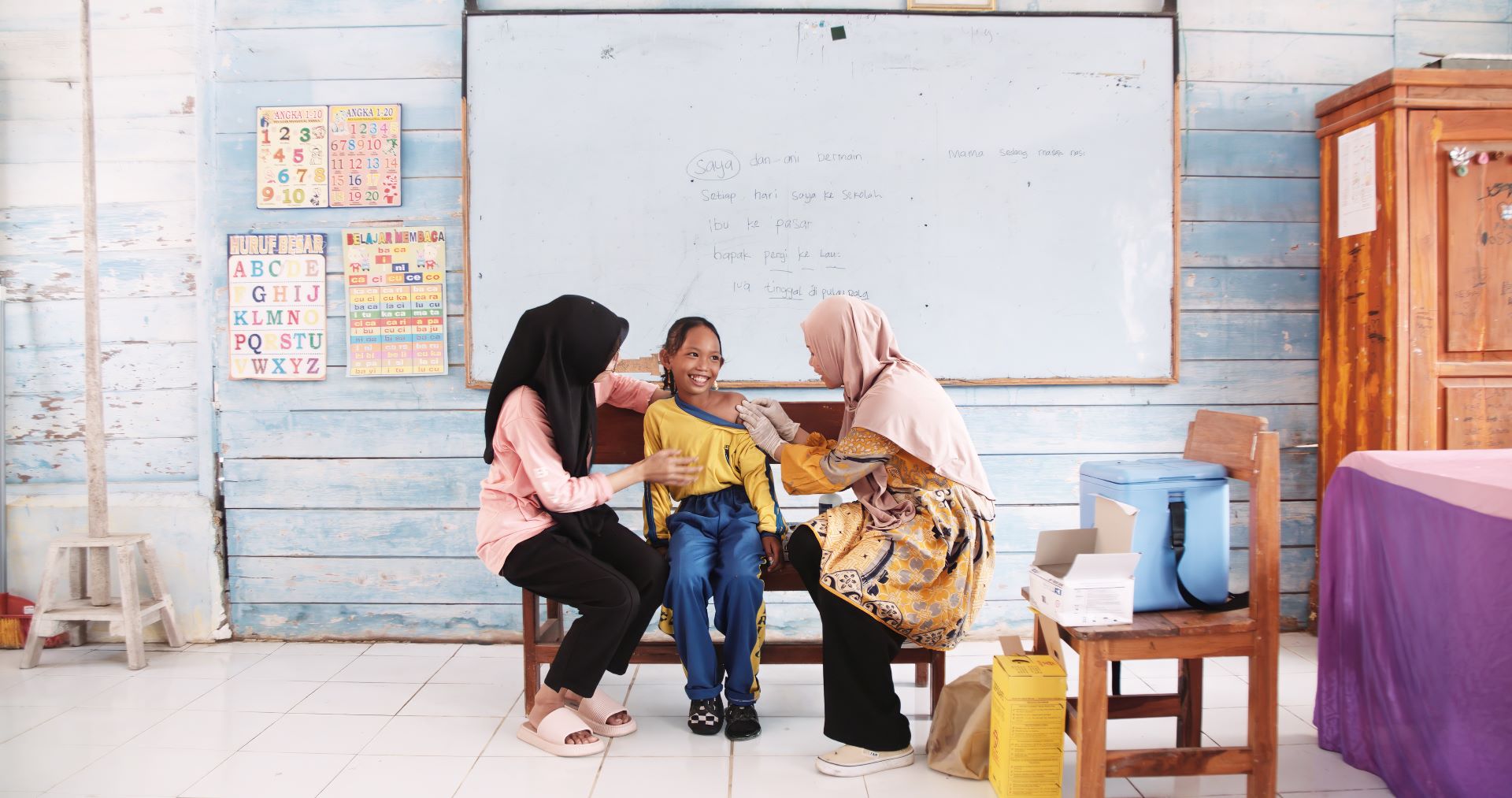When Rahmi (Mimi), a midwife from Pangkajene Islands (Pangkep), Indonesia, was young she used to wonder why her mother was always going away. “Now I understand,” she says. “She was fighting for us, her children, and also serving the island community, where her skills were desperately needed.”
At the time, her mother, Rabiah, was also a midwife. She provided care to remote island communities—places that could take her up to 24 hours to reach by boat if the weather and Flores Sea cooperated. As the only health worker on the islands, Rabiah had to do it all: deliver babies, conduct health screenings and health promotion activities, and ensure everyone in the community was up-to-date on their immunizations.
Though Mimi stayed home while her mother was at work, she’d often spend her free time playing doctor. Years later, Rabiah, a single mother, would send Mimi to midwifery school following in her footsteps. Her three other siblings would also become health workers.
“She is the greatest inspiration in my life,” says Mimi. “Since I was a child, I saw her fighting for the community. So, I also feel the desire to be like her, to be dedicated to the island communities.”
Braving big waves to prevent diseases
With over 17 500 islands in Indonesia, many people face challenges accessing sufficient medical care, including routine immunizations. As a result, the risk of disease is very high, especially for vaccine-preventable diseases, like measles.
On Sanane Island in South Sulawesi Province, where Mimi provides care, more than 95% of children have received their routine immunizations, thanks to the extraordinary efforts of the country’s health workers and health cadres.
Because some islands are small and remote, it is difficult for each one to have a dedicated immunization centre or clinic. Without an immunization centre, some islands lack the ice or refrigeration needed to keep vaccines cold.

Midwife Rahmi (Mimi) prepares vaccines at Baring Primary Health Care Centre in Pangkep, Indonesia, for transport to a remote island, while her daughter watches. © WHO / Harrison Thane
However, the District Health Office organizes specific vaccination days in the communities where Mimi works. On those occasions, Mimi wakes up well before dawn, gathers her vaccine carrier and collects the vaccines she needs from the primary health care centre. She then boards a boat and starts her long journey to the island, storing her vaccine carrier within the boat’s ice box to further keep the vaccine vials cold—the same journey her mother took throughout her career before retiring in 2013.
Once she arrives on the island, she and other health workers and volunteers spend the afternoons educating families and caregivers about the importance of immunization, and building trust among the community, a skill Mimi’s mother handed down to her.
The efforts to build trust in the community have paid off. On this day, Mimi is vaccinating children at Pala Island Public School #24 in South Sulawesi against human papillomavirus (HPV) and measles and rubella depending on each child’s immunization schedule.
Kurniati Yasin, Pala Island Public School #24 headmistress says, “When the health workers came to our school, braving the big waves, I felt happy, moved, proud. The programme at our school has helped our students understand the importance of health, how to take care of themselves, how to protect themselves, especially through the immunizations they received.”

Rahmi (Mimi), a midwife, applies an adhesive bandage to 10-year-old Fitriani, after she receives her vaccination against human papillomavirus (HPV).
© WHO / Harrison Thane
The immunizations have improved the children’s health, says Mimi. “I see that the children are healthier. The diseases that usually affect children who aren't vaccinated don't affect the children who are vaccinated. That's why I continue this immunization programme.” Besides providing immunization for children, Mimi also provides immunization for pregnant women, protecting them against tetanus and diphtheria.
Reaching all children with immunizations
The Government of Indonesia has been intensifying efforts to address the decline in immunization rates caused by the COVID-19 pandemic, with a focus on reaching un- and under-vaccinated children, particularly in remote and underserved areas like Pangkep, where Mimi operates. The pandemic caused significant disruptions to routine immunization services in the country, resulting in a drop in immunization coverage from 85% in 2019 to 67% in 2021.
In response, the government has implemented comprehensive and multi-faceted strategies to restore immunization coverage. A new electronic immunization registry has been introduced to ensure accurate tracking and improve follow-up efforts.
To catch up on missed vaccinations, three rounds of nationwide periodic intensification of routine immunization have been conducted, targeting children under age 5 who missed their doses. Technical assistance has been strengthened for priority provinces, and WHO’s Sustainable outreach services approach ensures immunization services are delivered to even the most remote communities, such as those on isolated islands.
"Every child, no matter where they live, has the right to immunization to protect them from life-threatening diseases. Together, let’s ensure no child is left behind—because every dose matters, and every child counts,” says Dr Prima Yosephine, Director of Immunization at the Indonesia Ministry of Health. These combined efforts aim to rebuild immunization coverage, strengthen health systems, and protect every child in Indonesia from preventable diseases.
